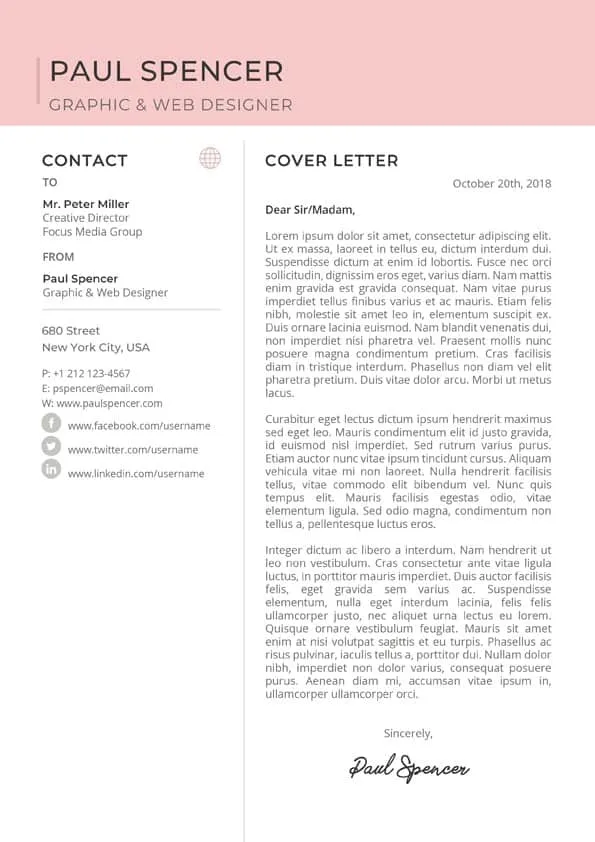Understanding Work Cover Letter Basics
A work cover letter is a crucial document that accompanies your resume when applying for a job. It serves as your introduction to a potential employer, providing an opportunity to showcase your personality, skills, and qualifications in a way that a resume alone cannot. Think of it as your personal sales pitch, designed to capture the hiring manager’s attention and persuade them to review your resume more closely. A well-crafted cover letter can significantly increase your chances of landing an interview, while a poorly written one can lead to your application being overlooked. The cover letter should be tailored to each specific job application, highlighting the skills and experiences most relevant to the position and the company’s needs. It is an opportunity to elaborate on specific accomplishments and explain why you are a perfect fit for the role.
The Purpose of a Work Cover Letter
The primary purpose of a work cover letter is to introduce yourself and express your interest in a specific job. It allows you to connect your skills and experience with the job requirements outlined in the job description. Moreover, a cover letter gives you the chance to explain any gaps in your employment history, address any potential concerns, or highlight specific aspects of your background that make you a strong candidate. It also demonstrates your communication skills, writing ability, and attention to detail. A well-written cover letter showcases your personality, enthusiasm, and genuine interest in the company and the position. This can make a significant difference in how your application is perceived, setting you apart from other candidates and increasing your chances of securing an interview. Cover letters show that you are serious and have put thought into your application.
Key Components of a Cover Letter
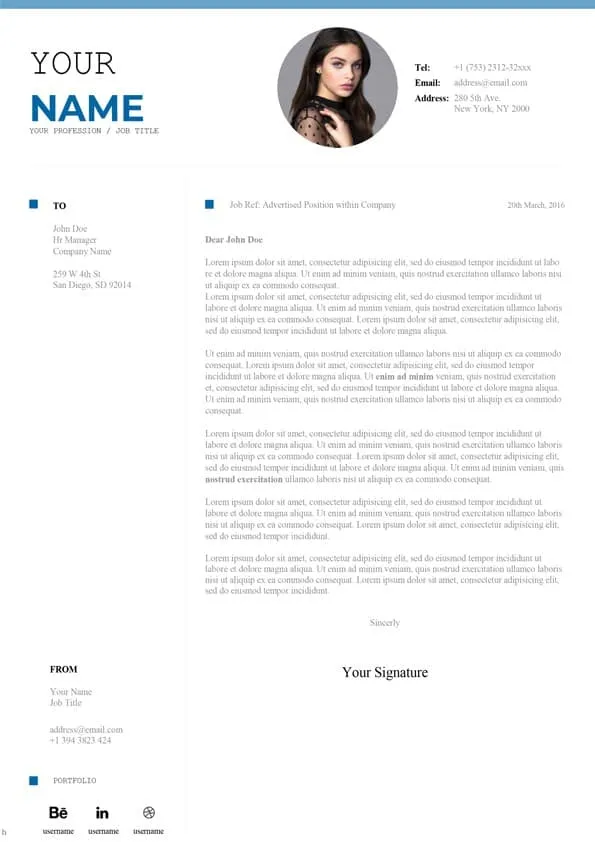
A strong work cover letter typically includes several key components. Firstly, start with a professional header that includes your contact information and the date. Then, address the hiring manager by name, if possible; otherwise, use a professional salutation. The body of your letter should start with an engaging introduction that grabs the reader’s attention and states the position you are applying for. In the main body, you should highlight your relevant skills and experiences, providing specific examples to demonstrate your accomplishments. Quantify your achievements whenever possible, using numbers and data to show the impact you’ve made in previous roles. Close your cover letter by reiterating your interest in the position, thanking the hiring manager for their time and consideration, and including a call to action, such as inviting them to contact you for an interview. Finally, proofread your cover letter carefully and ensure it is free of any errors.
Work Cover Letter Examples Top 5
Here are five different work cover letter examples tailored to various candidate profiles and job search situations. Each example highlights specific skills and experiences, demonstrating how to effectively present yourself to potential employers. Remember to customize these examples to reflect your unique qualifications and the specific requirements of the jobs you’re applying for.
Example 1 The Enthusiastic Professional
This type of cover letter is ideal for candidates who are passionate about the role and the company. It emphasizes enthusiasm, a positive attitude, and a proactive approach. The focus is on demonstrating how your excitement and energy can contribute to the company’s success. It shows that you are eager to learn, take on challenges, and be a valuable team member. The enthusiastic professional cover letter is a great way to highlight your soft skills, like communication, teamwork, and problem-solving. This cover letter should convey your passion and willingness to go the extra mile. It is especially effective if the company culture values enthusiasm and innovation. Be sure to provide specific examples of situations where your enthusiasm has led to positive outcomes.
Key elements in the enthusiastic professional cover letter
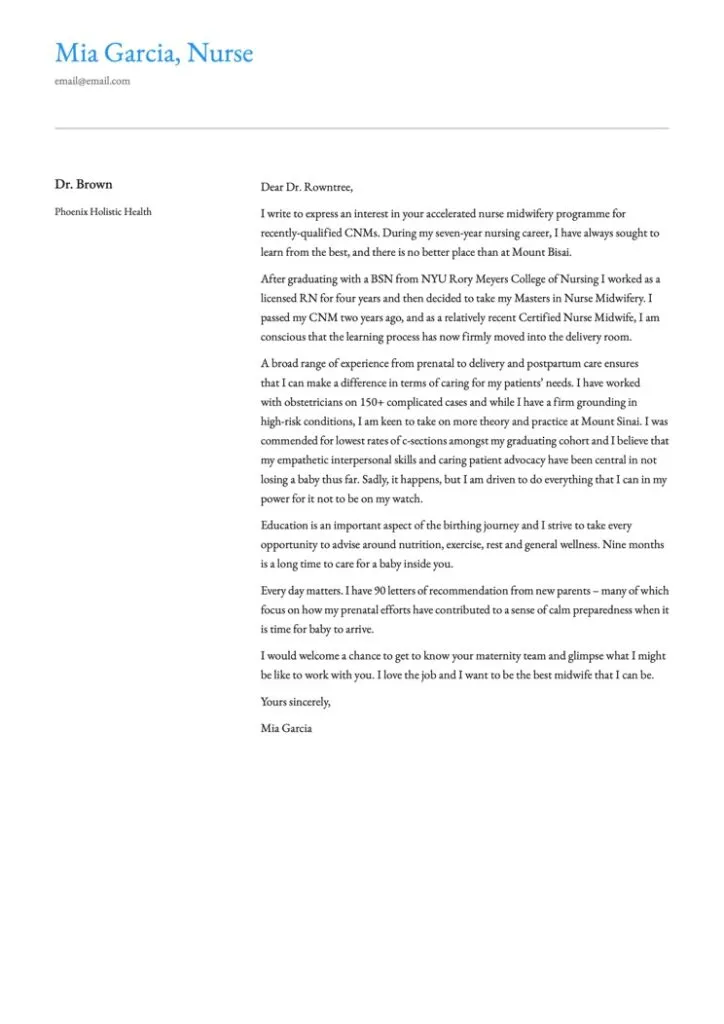
Begin with a compelling opening that expresses your excitement for the role and the company. Highlight relevant skills and experiences, focusing on how they align with the job requirements. Provide specific examples that showcase your enthusiasm, such as a time you went above and beyond in a previous role or a project you are particularly proud of. Mention your knowledge of the company’s products, services, or values. Close the letter with a confident statement about your eagerness to contribute and a call to action for an interview. The tone should be upbeat, positive, and professional, reflecting your energetic personality. This will help to set you apart from other candidates and make a memorable impression.
Example 2 The Results-Oriented Candidate
This cover letter example is designed for candidates who want to highlight their achievements and demonstrate their ability to deliver results. It focuses on quantifiable outcomes and measurable results achieved in previous roles. The key is to provide specific data and examples to showcase how you have exceeded expectations, improved processes, or contributed to the bottom line. The goal is to show the hiring manager that you are a results-driven individual who can make a tangible impact on their organization. This type of cover letter is most effective when applying for roles where performance and achievement are highly valued. The focus is on what you have accomplished rather than simply listing your responsibilities. It should be tailored to the job description, emphasizing the results that are most relevant to the position.
Key elements in the results-oriented cover letter
Start with a strong opening that immediately highlights your key accomplishments and emphasizes your ability to achieve results. Quantify your achievements using numbers and data, such as percentages, dollar amounts, or specific metrics. Highlight the skills and experiences that enabled you to achieve those results, linking them to the job requirements. Provide specific examples that illustrate your successes, such as projects completed, problems solved, or improvements implemented. Close the letter with a clear statement of your commitment to delivering similar results in the new role. Ensure that your letter is concise, focused, and emphasizes your accomplishments and their relevance to the job.
Example 3 The Career Changer
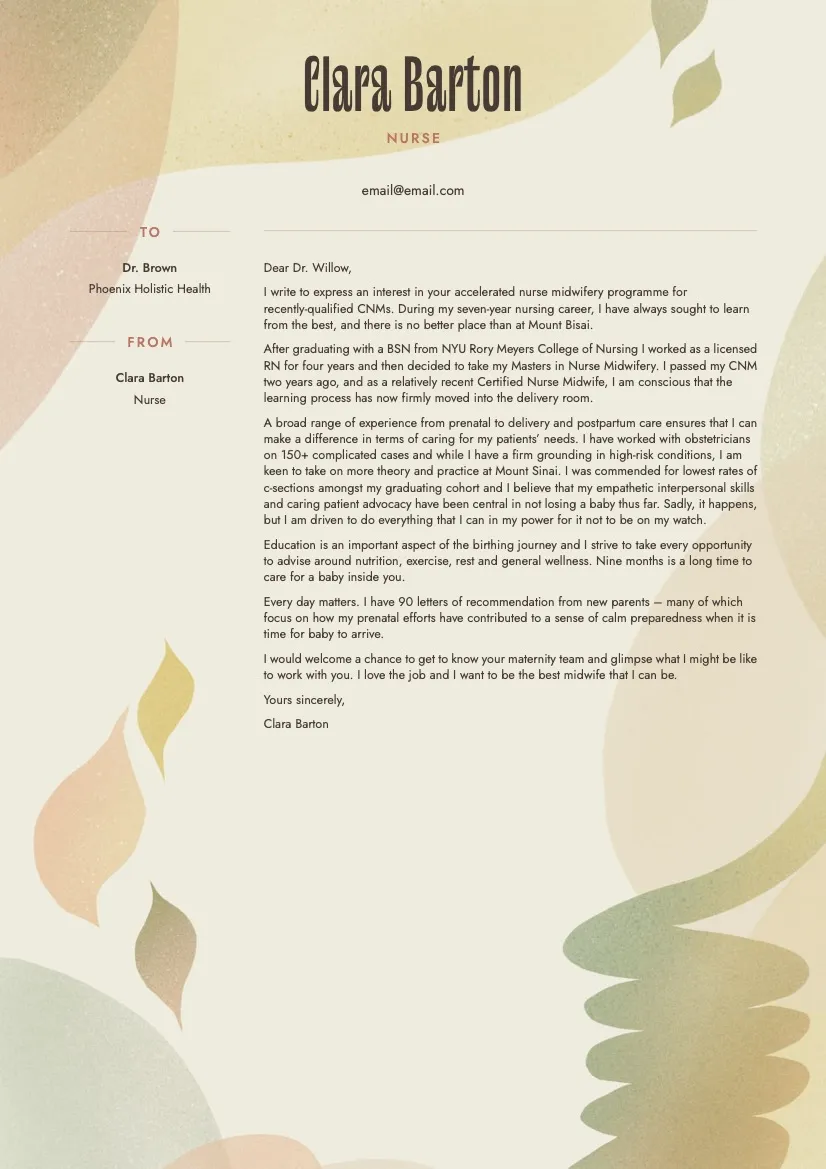
This cover letter is for candidates who are transitioning to a new career or industry. It requires a strategic approach to highlight transferable skills and explain the reasons for the career change. The goal is to convince the hiring manager that your skills and experiences, even if not directly related to the new field, are valuable and can contribute to the role. It’s crucial to address any potential concerns about the career change and to show how your previous experiences have prepared you for the new position. The key is to focus on the skills and experiences that are transferable, emphasizing your adaptability, willingness to learn, and passion for the new career path. This type of cover letter should demonstrate that your career change is a well-considered decision.
Key elements in the career changer cover letter
Begin with a clear statement of your interest in the new role and your reasons for the career change. Highlight the transferable skills and experiences from your previous roles that are relevant to the new position. Provide specific examples that demonstrate how your skills have been applied in different contexts. Address any concerns the hiring manager might have about your career change, explaining your motivations and your commitment to the new field. Emphasize your willingness to learn and adapt, and your enthusiasm for the new career path. Close with a strong statement about your ability to succeed in the role and your eagerness to contribute. Make sure your cover letter is well-organized, concise, and emphasizes your transferable skills and enthusiasm.
Example 4 The Recent Graduate
This cover letter is specifically tailored for recent graduates entering the workforce. It focuses on highlighting academic achievements, relevant coursework, internships, and extracurricular activities. Since recent graduates may have limited professional experience, the cover letter should emphasize skills gained through education and other experiences, such as teamwork, problem-solving, and communication. The goal is to demonstrate your potential, eagerness to learn, and ability to contribute to the company. You should showcase any relevant projects, research, or presentations completed during your studies. This type of cover letter is an opportunity to highlight your enthusiasm and willingness to begin your career. Focus on your transferable skills and explain how your education and experiences have prepared you for the role.
Key elements in the recent graduate cover letter
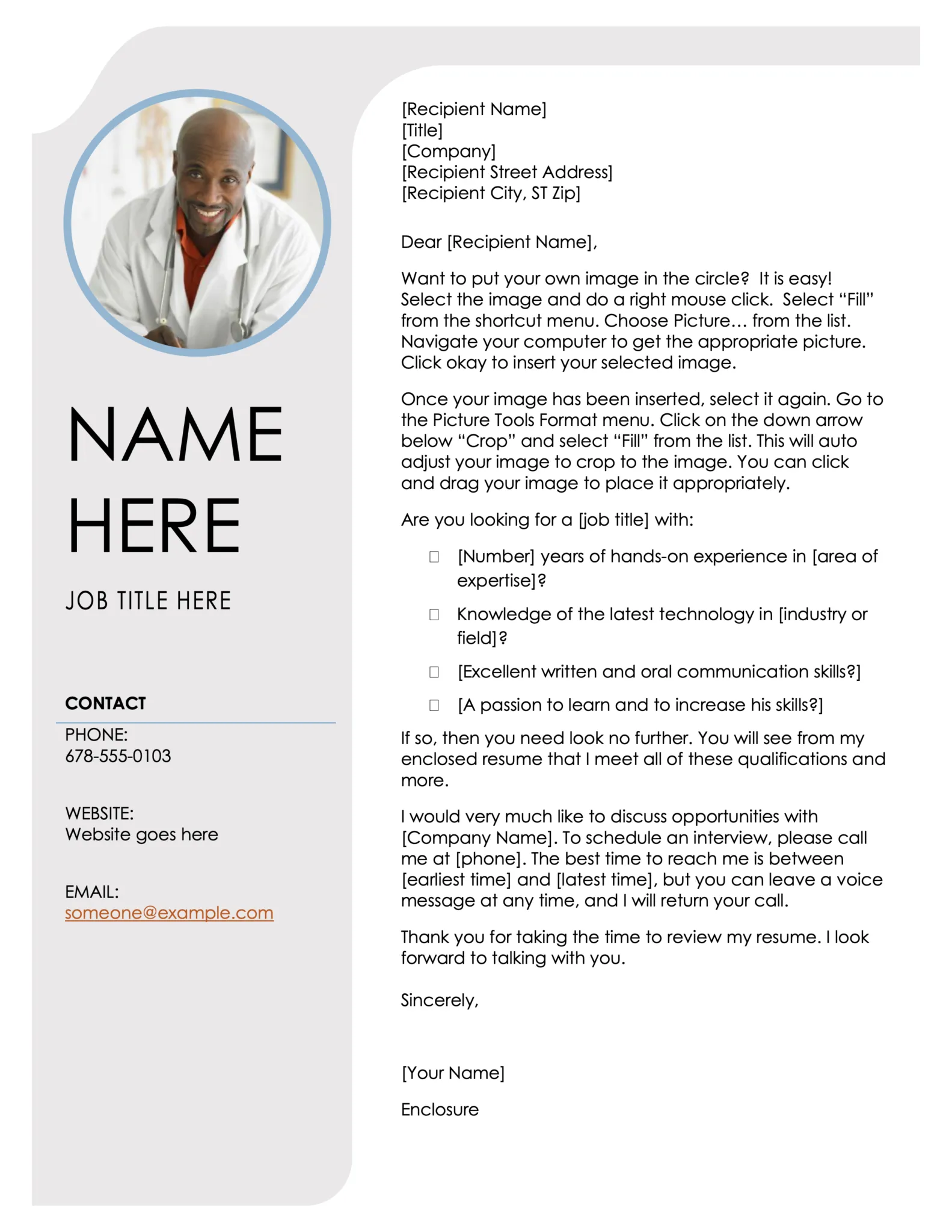
Start by expressing your interest in the position and the company, highlighting your enthusiasm. Showcase your academic achievements, such as your GPA, awards, or honors, if they are relevant to the role. Highlight any relevant coursework, projects, or research you completed during your studies. Mention any internships, volunteer work, or extracurricular activities that demonstrate your skills and experiences. Focus on the skills you gained, such as teamwork, communication, and problem-solving, and relate them to the job requirements. Close with a confident statement about your eagerness to learn and contribute, and your interest in the opportunity. Ensure the cover letter is clear, concise, and shows your enthusiasm for the role and the company.
Example 5 The Skilled Worker
This cover letter is designed for skilled workers who have a specific trade or expertise. It focuses on highlighting your technical skills, certifications, and practical experience. It should clearly demonstrate your proficiency in your trade and showcase your accomplishments. The goal is to show that you possess the required skills and experience to excel in the position. Provide specific examples of projects you have worked on, challenges you have overcome, and results you have achieved. Quantify your accomplishments whenever possible, using data or metrics to show your impact. This type of cover letter is effective when the job requires a specific set of skills and technical expertise.
Key elements in the skilled worker cover letter
Begin by stating your interest in the position and highlighting your relevant skills and expertise. List your certifications, licenses, and any specialized training you possess. Provide specific examples of your work experience, emphasizing projects, challenges, and results. Quantify your accomplishments whenever possible, using metrics to show your impact. Highlight any relevant tools, equipment, or software you are proficient in. Close with a confident statement about your ability to meet the job requirements and your eagerness to contribute. The cover letter must be clear, concise, and clearly highlight your practical skills and experience.
Customizing Your Work Cover Letter
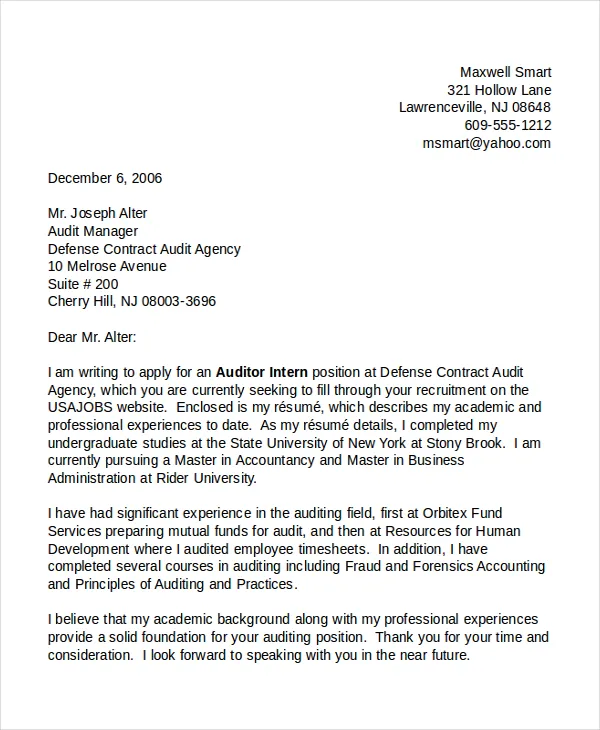
Customizing your work cover letter is essential to making a positive impression. It’s important to tailor each cover letter to the specific job you are applying for, ensuring that it reflects the requirements of the position and the values of the company. This shows that you have taken the time to understand the role and are genuinely interested in the opportunity. Customization will help you to stand out from other applicants by demonstrating your understanding of the company and the role. You are making a connection, not just submitting a generic application. This is a great opportunity to highlight skills and experiences that align with the job description and explain why you are the best candidate. Avoid using generic templates without making significant edits to the content.
Tailoring to the Job Description
Carefully review the job description and identify the key skills, qualifications, and experiences that the employer is seeking. Customize your cover letter by highlighting the skills and experiences that directly match those requirements. Use keywords from the job description throughout your cover letter to demonstrate that you meet the employer’s needs. Provide specific examples of how you have demonstrated those skills in previous roles or situations. Explain how your experience and background make you a perfect fit for the role. Always focus on what the employer is looking for and provide evidence that you can fulfill their needs. By aligning your cover letter with the job description, you increase your chances of getting noticed and securing an interview. It demonstrates your ability to understand the requirements and tailor your application accordingly.
Highlighting Relevant Skills and Experience
Focus on the skills and experiences most relevant to the job you are applying for. Instead of simply listing your qualifications, provide specific examples that demonstrate how you have used those skills and achieved results. Use the STAR method (Situation, Task, Action, Result) to structure your examples, providing context, outlining the task, detailing your actions, and quantifying the results. Highlight your accomplishments and quantify your achievements whenever possible. For example, if you improved sales, mention the percentage increase. This shows the hiring manager the value you can bring to the role. Use action verbs and impactful language to showcase your skills and accomplishments. Customize your cover letter by emphasizing your key achievements and skills related to the role.
Proofreading and Formatting for Success
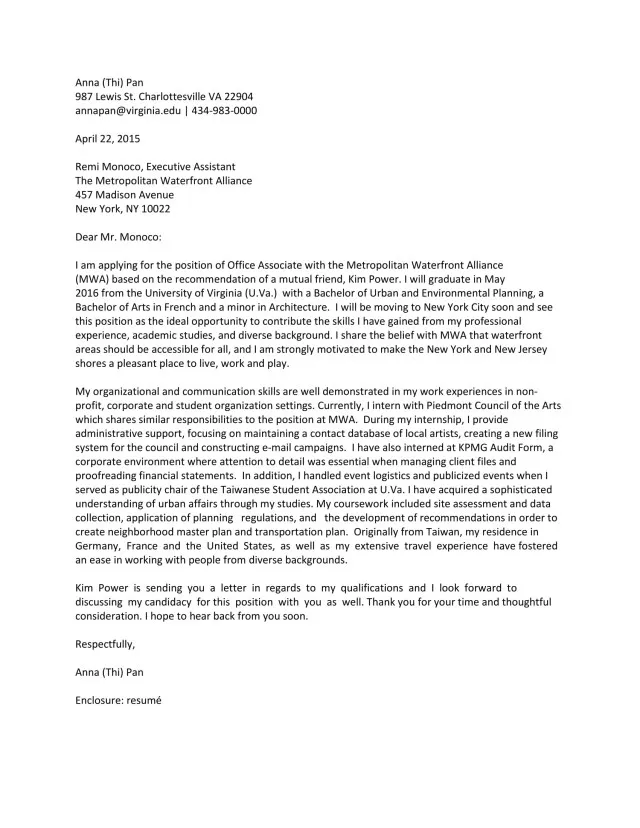
Proofread your cover letter meticulously for any grammatical errors, spelling mistakes, or typos. These errors can create a negative impression and may lead to your application being rejected. Use a grammar checker and ask someone else to review your cover letter. Ensure your cover letter is well-formatted and easy to read. Use a professional font and maintain consistent formatting throughout. Keep the cover letter concise and to the point, aiming for one page in length. Use clear and concise language, avoiding jargon or overly complex sentences. The layout should be clean and well-organized, with clear headings and spacing. A well-formatted and error-free cover letter demonstrates your attention to detail and professionalism. It shows that you care about making a good impression and are committed to presenting yourself in the best possible light. A polished cover letter shows that you are meticulous and professional.
